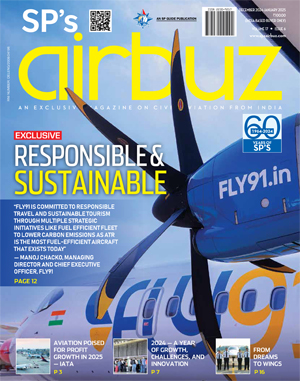Bombardier CSeries – A Class Apart
When the CS100 enters service, hopefully by late 2015, followed by the CS300 a few months later, it will present to the world, an aircraft that can be well utilised to generate profits. The CSeries is Bombardier’s first all-new airliner, a clean sheet design which incorporates features that make many firsts for Bombardier.

With the acquisition of Canadair, Short Brothers, Learjet and de-Havilland aircraft of Canada between 1986 and 1992, Bombardier’s presence in aerospace grew substantially. Along with these companies came designs, which after modifications, resulted in the Canadian Regional Jet (CRJ) series of regional jetliners and the popular Dash-8 Q400. The CSeries, however, is Bombardier’s first all new airliner, a clean sheet design which incorporates features that make many firsts for Bombardier.
Of the many firsts, the most notable is Bombardier’s foray into a territory so closely guarded by Airbus and Boeing, the narrow body, short-/mediumrange mainline jetliners. No other class of airplanes has sold as well as these 130- to 220-seat jets, the Airbus A320 family, which has been in service for the last 26 years, has total orders for 10,076 airplanes, of which 4,229 are yet to be delivered. The Boeing 737 family, which has been in service for 46 years, has four sub-families, each a betterment of the previous and has a total of 11,279 orders, of which 3,456 are yet to be delivered. No other airplane has managed to grab a share of this segment.
With the launch of the CSeries, Bombardier would position itself at the lower end of this capacity segment. The CS100 seats 110 passengers in a standard single class and the longer CS300 seats 135 passengers. Very interestingly, the CSeries CS300, which directly competes with the Airbus A318 and Boeing 737-600, arrives at a time when Boeing and Airbus have clearly abandoned these 130-seat airplane models, the A320neo family has no A318neo and the Boeing 737MAX family has no Boeing 737MAX 6. Looking at it from this angle, Bombardier has moved into a territory relinquished by the commercial aviation majors and has also filled the gap between its CRJ regional jet offering and the popular Airbus and Boeing narrow-body models.
The CS300 can seat 150 passengers in “high density single class” and a maximum of 160 passengers in “extra capacity” configuration. This is where Bombardier competes with the 156-seat Airbus A319 and the 148-seat Boeing 737-700, taking its first steps away from the “regional aircraft manufacturer” tag.
The Market Speaks
A reason for the failure of the Boeing 737-600 and the Airbus A318 is the suboptimal performance and the operating costs associated with scaling down a larger airplane. The A318 and the Boeing 737-600 are shortened versions of the Airbus A320 and the Boeing 737-800, respectively. Sales of the two types account for just 0.8 per cent of the total orders across the families, making the types clear market failures.
The Bombardier Regional Jet (BRJ) design, which later became the CSeries, was applauded in 1998 by airlines as a true 100-seat airplane, unlike attempts by Airbus and Boeing to scale down much larger airplanes. The ‘C’ in the CSeries was for competitive-continental-connector. But with the development of the aircraft that followed and the large diversity of customers who later joined the programme, Bombardier now regards continental as too limited. The CSeries is also a transcontinental aircraft.
In July 2008, Bombardier officially launched the CSeries, with a letter of interest for 60 aircraft and 30 options from Lufthansa. Nico Buchholz, Lufthansa’s Executive Vice President for group fleet management, says that Lufthansa has been involved in the CSeries from before its inception to today and has pushed Bombardier to listen to the airline community and introduce some modifications that resulted in a small time slip, but gave us a better aircraft.
Unlike most airlines, Lufthansa actively participates in the development of an aircraft. Professor Gerhard Höltje, one of Lufthansa’s former Technical Directors, convinced Boeing to build the Boeing 737, a tailor-made short-haul jet for Lufthansa. Boeing wasn’t easy to convince. Boeing’s eventual agreement and Lufthansa’s persistence, made the fortunes of the airplane manufacturer; which is why Lufthansa proudly states, “The Boeing 737–‘made’ by Lufthansa”.
The CSeries is another such airplane, though this time around, not exclusively Lufthansa’s. The CSeries claims a 20 per cent block fuel and a 15 per cent cash operating cost per seat advantage over in-production aircraft. So good and achievable were the claims that Airbus, fearing losing to the new, unproven competition, in late 2010, decided to re-engine the Airbus A320, launching the new engine option. This was followed by Boeing’s decision to re-engine its Boeing 737 family, launching the MAX series.
The CS300 airplane promises a cost per available seat mile (CASM) similar to the reengined Airbus A320neo and up to 12 per cent block fuel advantage over competing, reengined airplanes. This does mean that the A319neo and Boeing 737-MAX7 cannot match up to the CS300’s operating economics. The larger CS300 130-seat version lists at $63 million apiece. According to a 2013 Airbus press release, the average list price of the A319 is $83.6 million and that of the A319neo is $92 million. According to Boeing, the 2013 average list price of the Boeing 737-700 is $76 million and that of the Boeing 737MAX 7 is $85.1 million.
While the CS300 appears to emerge as a winner from every possible angle including its availability sooner than the A320neo and Boeing 737MAX families, orders for the CSeries CS300 stands only at a dismal 119. Bombardier Commercial Aircraft President Mike Arcamone feels confident that total orders for the CS100 and CS300 will touch 300 by entry into service (EIS), planned for late 2015 as per the revised schedule announced by the company recently.
Two concerns apparently stand between the airliner and the airlines. One is the reputation of Bombardier’s airplanes concerning maintenance and dispatch reliability, although Bombardier is actively taking steps to transform its airplanes and the maintenance image.
A second more dominant reason is the many firsts associated with the airplane and the manufacturer. The CSeries is Bombardier’s many firsts—first clean-sheet design airliner, the largest airplane to be built by the manufacturer, Bombardier’s first fly-by-wire aircraft, first all-composite wing, first aircraft world over to be powered by the relatively immature Pratt and Whitney geared turbofan (GTF) engine. So many firsts, just like the Boeing 787, have people apprehensive about possible issues (like the 787) and performance gaps (the 787, when rolled out, fell short on the promised range). Unlike the Airbus and Boeing offering, the CSeries is not an upgrade of a proven, mature platform and that puts a question on actual performance, costs, resale value, predictability, safety, maintenance, training and sufficient availability of qualified pilots and engineers.
But Lufthansa’s Buchholz says, “We analysed the technology for the aircraft and engines and eventually became convinced that it would actually happen. Bombardier has actually managed to deliver on its promise. Every step was the right action for the programme.”
The CSeries: A Perfect Fit for the Indian Market
Among the airlines in India, IndiGo, the best performing of all, has the best load factors, an average of 81.4 per cent over five years from 2009 to 2013, with the highest being 83.8 per cent in 2010. IndiGo’s single-type fleet of Airbus A320 aircraft can accommodate 180 passengers—83.8 per cent load factor corresponds to 150 seats. If an airline like IndiGo were to use a 150-seat CS300, the load factors could be closer to 100 per cent and the total operating costs would be lower. This means profit. Further, the operating performance of the CS300 allows the aircraft to fly all domestic and all international routes flown by IndiGo’s A320 aircraft.
Although the CSeries CS300 offers lower capacity and thereby lesser “revenue generating potential”, increasing capacity always poses a higher risk. In a volatile, difficult Indian civil aviation market, reducing capacity, lowering operating costs and lowering risk actually guarantees profits, rather than merely promising profits.
But the CSeries offers more than just sensible operating economics. Low operating costs and lower capacity can allow airlines lower airfares, pulling close to 100 per cent load factors on dense routes. In addition, the aircraft offers wider seats with more legroom: the economy cabin, with a five abreast seating, features 18.5” wide window and aisle seats and a 19” wide middle seat. The Airbus A320s with IndiGo and Boeing 737NG airplanes the world over feature 17” wide seats only. In addition, the CS300’s cabin with 150 seats offers a 30” seat pitch; while an A320 with 180 seats is just 29”. The Pratt and Whitney GTF engines on the CSeries airplanes are similar to those that will initially power the A320neo and are quiet, increasing passenger comfort.
With orders for the CS300 standing at 65 per cent of the total CSeries orders, the CS300’s potential is well appreciated. When the CS100 enters service, hopefully by late 2015, followed by the CS300 a few months later, it will present to the world, an aircraft that can be well utilised to generate profits. As for India, all that it will take for an airline to succeed is a fleet of CS300 airplanes, a good strategy and operating policy, good support from Bombardier for maintenance, training and personnel, and most importantly, list price discounts from the manufacturer. Air travel then will be truly revolutionised with the promising change that is the CSeries.





